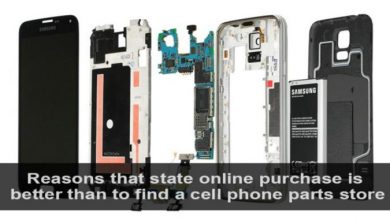Printer security isn’t worth worrying about-is it?
Printer security isn't worth worrying about-is it?
Deprecated: preg_split(): Passing null to parameter #3 ($limit) of type int is deprecated in /home4/ldahphmy/public_html/techbestspot/wp-content/themes/jannah/framework/functions/post-functions.php on line 791
When considering enterprise Impresoras HP security, we generally refer to and consider firewalls, intrusion prevention systems (IPS), virtual private networks (VPNs), encryption and authentication. When you think about protecting your data, you think about protecting your critical servers and databases. I rarely think about printers. Billions of dollars are spent on security every year around the world, but how much has your organization spent on securing printers over the last 12 months? If you answer zero, you are the majority.
Printers have come a long way since they were widely adopted in the late 1970s and early 1980s. At that time, each printer was connected to a separate system and could only process one print job at a time. Today, printers have matured into multifunctional devices that have little resemblance to their distant origins. 21st century printers perform dozens of tasks, including but not limited to printing, scanning, copying, faxing, and even email. Most users, and even system, network, and security administrators, don’t understand what’s really happening inside the printer and what features they actually have. Most users are still thinking about printers that are 30 years old. An unintelligent device that only has the ability to print documents. This view is far from the truth.
A buffer is basically an area of memory that allows temporary data to be stored. The printer uses this buffer to store a digital version of the document you are printing, scanning, or faxing. Depending on the device, this buffer can range from a small piece of random access memory (RAM) to a hard disk drive, such as the type found on desktop or laptop computers. For large enterprise printers, this buffer is not the only memory store in the printer. A larger non-volatile memory area is provided to store semi-permanent or permanent information. For example, some printers allow you to scan a document and save it as a PDF in the printer. The user can then connect to the printer and download the document as if it were a network drive or through a web page.
So where is this going? Leakage or theft of sensitive corporate information. Large companies may have developed and implemented data retention and destruction policies, but these rarely include printers. Enterprises consider hard copies of documents, CDs, DVDs, workstations, laptops, and server hard drives when creating data corruption policies. It’s clear that they identify hard drives as a source of sensitive information, but even if they know their existence, they rarely consider the hard drives included in the printer. Printers are also often overlooked as security policies, procedures, and guidelines are created and implemented. There is little, if any, time to investigate the security of printers and the implications of not protecting corporate printers. This is even more annoying when considering the common types of documents that pass through the printer in a corporate environment. Depending on the industry or department within your organization, documents can range from sensitive financial records to personal customer data to detailed network diagrams.
To understand how sensitive data is leaked to the outside world through a simple printer, it is common for corporate environments, security controls within that environment, and users, printers, and file systems that store restricted data. It is necessary to understand the flow of information.




